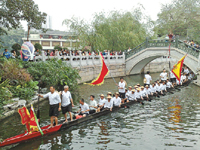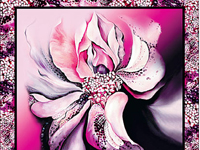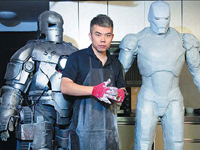Memorial swirls with the forces of China's history
Updated: 2012-12-20 10:26
By Raymond Zhou in Guangzhou (China Daily)
|
||||||||
In the 1920s and 30s, it was used as a sports academy. When it was occupied by Japanese invaders, it became their barracks. In 1950, it was a "cadre school" for training government officials.
The first revamp was the result of local people's representatives (congressmen) proposing to protect it as a cultural heritage. The school was moved out; a massive restoration project was started; thousands of exhibits were assembled.
On Oct 1, 1959, the compound opened to the public as Guangdong Folk Crafts Museum.
Unfortunately, this was not enough to shelter the cluster of buildings from ensuing political turmoil. At the start of the "cultural revolution" (1966-76), Red Guards destroyed everything that was old. They took the 10,000 shrine plaques and burned them, but they were talked out of demolishing the cornucopia of rooftop carvings by the museum staff.
As more of them came - and from places other than Guangzhou - presumably with even less knowledge of the temple and its historical value, they were surprised to find themselves in a printing shop churning out former leader Mao Zedong's "Little Red Book".
The museum, in desperation, had resorted to the tactic of moving in a factory as the "politically correct" gesture to forestall "revolutionary fervor".
In secret, the staff took down and relocated many engraved doors, windows and wooden plaques with calligraphy, thus preserving many of the old objects.
The printing shop might have scared away young zealots, but it attracted unsavory elements of another kind.
Not long after, another factory broke down part of the back wall and took the back yard. A school seized the front yard. An architectural gem was essentially engulfed by dense, ugly structures on all sides. Even a local resident had trouble locating it.
As soon as the political mania was over, people of Guangzhou called for the restoration of the compound to its former splendor.
But it took two more decades to clear all the debris of the political fallout.
Now, the Chen Family Temple looks better than ever. A square as big as the compound has been created, complete with a pair of flagpoles.
The ornate brick and wood carvings on the roofs and cornices have finally been given the prominence they are due. It is said to be a Western influence to have so much detail engraved in places where spectators have to strain their neck for a good look. A handful of shrines still stand in the main hall, a replica that hardly does justice to the sea of plaques that used to be there.
If you love Beijing's traditional courtyard houses, you'll love the Chen Family Temple because it is like an enlarged courtyard, or rather, half a dozen courtyards joined together, perfectly symmetrical and appropriately grand.
But look more closely, and you will see the unmistakably Cantonese touch.
raymondzhou@chinadaily.com.cn

 'Taken 2' grabs movie box office crown
'Taken 2' grabs movie box office crown
 Rihanna's 'Diamonds' tops UK pop chart
Rihanna's 'Diamonds' tops UK pop chart
 Fans get look at vintage Rolling Stones
Fans get look at vintage Rolling Stones
 Celebrities attend Power of Women event
Celebrities attend Power of Women event
 Ang Lee breaks 'every rule' to make unlikely new Life of Pi film
Ang Lee breaks 'every rule' to make unlikely new Life of Pi film
 Rihanna almost thrown out of nightclub
Rihanna almost thrown out of nightclub
 'Dark Knight' wins weekend box office
'Dark Knight' wins weekend box office
 'Total Recall' stars gather in Beverly Hills
'Total Recall' stars gather in Beverly Hills
Most Viewed
Editor's Picks

|

|

|

|

|

|
Today's Top News
Health new priority for quake zone
Xi meets US top military officer
Japan's boats driven out of Diaoyu
China mulls online shopping legislation
Bird flu death toll rises to 22
Putin appoints new ambassador to China
Japanese ships blocked from Diaoyu Islands
Inspired by Guan, more Chinese pick up golf
US Weekly

|

|









